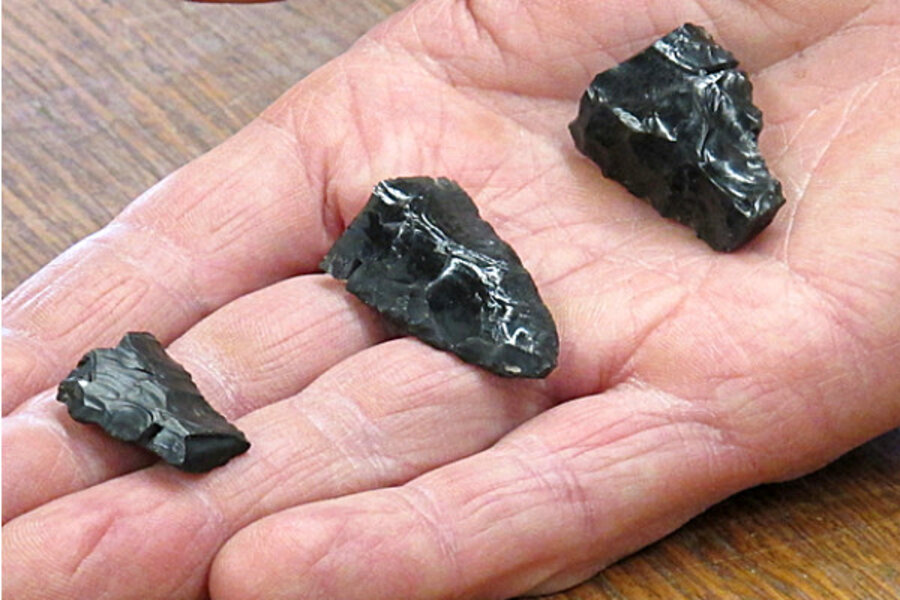Oregon cave discovery sheds new light on American Stone Age
Loading...
| Grants Pass, Oregon
Stone tools and human DNA from ancient caves in the western U.S. offer new evidence of how some of the first Americans may have spread through the continent from Asia: on two different routes, as shown by two different ways of making the tips of spears.
Archaeologists said Thursday that they have dated broken obsidian spear points from Paisley Caves in Oregon to about 13,200 years ago — as old as much different stone tools from the Clovis culture found in the southeast and interior U.S. And radio-carbon dating of human DNA from coprolites — ancient desiccated human feces — shows people lived in the caves as early as 14,300 years ago.
The dates indicate that the Clovis style of chipping stone was not the mother of Stone Age technology, as others have theorized, and that the two styles were developed independently by different groups, said Dennis Jenkins, an archaeologist with the University of Oregon's Museum of Natural and Cultural History who led the excavations.
Jenkins said the findings suggest those groups may have taken separate routes after crossing the Ice Age land bridge from Asia. Those making western stemmed projectiles may have gone down the coast, while the Clovis people traveled through an ice-free corridor in the interior U.S.
The findings by a team of scientists from the U.S., Britain and Denmark were reported online in the journal Science.
The Clovis culture is named for elegantly chipped stone points found at a site uncovered in 1929 near Clovis, New Mexico. The bases are distinctly concave where they were tied to the wooden shafts of spears or throwing darts for hunting. The style found in Oregon is known as western stemmed projectile points, for their thick bases and their discovery throughout the western U.S.
"The big 'aha!' here, or the primary significance of this is that ... we have demonstrated that these western stemmed tradition points are the same age as Clovis," Jenkins said in a teleconference with reporters. "There is no evidence of Clovis or any precursor to Clovis in the caves currently, and so that suggests that you've got here, at the exact same time, at least two technologies."
Until now, most western stemmed projectiles with accurate dating have been younger than Clovis artifacts, leading to theories the two technologies evolved from a single source. The new evidence goes against that idea. Jenkins said it appears more likely they evolved independently.
But not all experts are convinced.
David Meltzer, professor of prehistory at Southern Methodist University, said the study clearly showed western stemmed projectiles existed at the same time as Clovis. But he was not ready to say the stone points showed separate ancient migrations.
"Points are not people," he said. "Just because two ways of fashioning projectile points are different doesn't mean different populations any more than different groups of people drive Hummers rather than Priuses."
Jenkins and others reported in 2008 that they found coprolites in the Paisley Caves that dated back 14,300 years, the oldest radio-carbon-dated human DNA in North America. The DNA was genetically linked to people from Asia as well as modern Indians.







